Why Choose Low Reflection Waveguide Termination for High-Frequency Applications?
In the demanding world of high-frequency microwave engineering, the selection of appropriate termination components can make the difference between system success and failure. Low reflection waveguide termination represents a critical component that ensures optimal signal integrity and system performance across diverse applications ranging from satellite communications to advanced radar systems. When signals propagate through waveguide structures at frequencies extending into the millimeter-wave spectrum, unwanted reflections can cause severe impedance mismatches, standing wave formations, and signal degradation that compromise entire communication networks. The choice of high-quality Waveguide Termination solutions becomes paramount in maintaining system reliability, minimizing insertion losses, and achieving the precise performance characteristics demanded by modern high-frequency applications in aerospace, defense, telecommunications, and research environments.
Superior Electrical Performance in High-Frequency Environments
Exceptional VSWR Characteristics for Optimal Signal Integrity
Advanced microwave systems operating at frequencies extending to 110 GHz require termination components that can maintain exceptional voltage standing wave ratio (VSWR) performance across the entire operational bandwidth. Low reflection Waveguide Termination components achieve VSWR values less than 1.05 across the full waveguide bandwidth, representing a remarkable achievement in microwave engineering. This exceptional performance is achieved through precision conical load elements that provide optimum electrical characteristics while maintaining consistent impedance matching throughout the frequency spectrum. The superior VSWR performance directly translates to reduced signal reflections, minimized insertion losses, and enhanced overall system efficiency. In satellite communication applications, where signal quality is paramount for reliable data transmission across vast distances, these exceptional VSWR characteristics ensure that communication links maintain their integrity even under challenging propagation conditions. The precision engineering behind these termination components involves careful consideration of geometric parameters, material properties, and electromagnetic field distributions to achieve the desired electrical performance while maintaining mechanical stability and environmental durability.
Minimized Return Loss Across Wide Frequency Ranges
The achievement of minimal return loss across wide frequency ranges represents one of the most significant advantages of high-quality Waveguide Termination components in modern microwave systems. Return loss measurements directly indicate the effectiveness of impedance matching and signal absorption within the termination structure. Professional-grade termination components are designed to provide return loss values exceeding 20 dB across their operational frequency ranges, ensuring that reflected power remains below 1% of the incident signal power. This exceptional performance is particularly crucial in radar applications where reflected signals can create false targets or mask legitimate radar returns. The wide frequency support capability, extending from DC to 110 GHz, enables these termination components to serve diverse applications ranging from traditional communication systems to cutting-edge millimeter-wave technologies. Advanced manufacturing techniques and precision material selection contribute to achieving these remarkable return loss characteristics while maintaining long-term stability and reliability under varying environmental conditions.
Enhanced Signal Quality Through Precision Engineering
Precision engineering in Waveguide Termination design involves sophisticated electromagnetic modeling, advanced material selection, and meticulous manufacturing processes that collectively contribute to enhanced signal quality in high-frequency applications. The utilization of high-grade materials such as aluminum and copper ensures excellent thermal conductivity and mechanical stability while providing the necessary electromagnetic properties for optimal signal absorption. Manufacturing tolerances measured in micrometers ensure that the termination components maintain their electrical characteristics across production batches and throughout their operational lifetime. Advanced testing procedures utilizing state-of-the-art measurement equipment verify performance characteristics across the entire frequency spectrum, ensuring that each termination component meets stringent quality standards. The integration of these precision-engineered components into microwave systems results in improved signal-to-noise ratios, reduced spurious emissions, and enhanced overall system performance that directly benefits end-user applications in critical communication and radar systems.
Robust Design for Demanding Applications
High Power Handling Capabilities for Critical Systems
Modern high-frequency applications often require termination components capable of handling substantial power levels while maintaining their electrical and mechanical integrity. Professional Waveguide Termination components are engineered to handle power levels up to 500 watts, making them suitable for demanding applications in military radar systems, high-power communication transmitters, and industrial microwave equipment. The high power handling capability is achieved through careful thermal design, advanced material selection, and robust mechanical construction that enables effective heat dissipation and thermal management. In defense applications, where system reliability under extreme conditions is paramount, these high power handling capabilities ensure that termination components can withstand the rigorous operational requirements while maintaining their electrical performance characteristics. The thermal stability of these components allows them to operate efficiently across wide temperature ranges, from extreme cold conditions encountered in aerospace applications to high-temperature environments found in industrial settings. Advanced thermal modeling and testing procedures verify the power handling capabilities under various operational scenarios, ensuring reliable performance throughout the component's operational lifetime.
Durable Construction for Long-Term Reliability
The construction of high-quality Waveguide Termination components involves the use of premium materials and advanced manufacturing techniques that ensure long-term reliability in challenging operational environments. Aluminum and copper construction provides excellent corrosion resistance, mechanical strength, and thermal conductivity while maintaining the necessary electromagnetic properties for optimal performance. Surface treatments and protective coatings further enhance environmental resistance, ensuring that the components maintain their electrical characteristics even when exposed to harsh weather conditions, salt spray, or chemical environments. Mechanical design considerations include stress analysis, vibration resistance, and shock tolerance to ensure reliable operation in mobile platforms, aerospace applications, and industrial environments subject to mechanical disturbances. Quality control procedures throughout the manufacturing process verify dimensional accuracy, material properties, and electrical performance to ensure that each termination component meets stringent reliability standards. The durability of these components is further enhanced through comprehensive testing procedures that simulate accelerated aging, thermal cycling, and environmental exposure to verify long-term performance characteristics.
Versatile Applications Across Multiple Industries
The versatility of advanced Waveguide Termination components enables their deployment across diverse industries and applications, from satellite communications to aerospace and defense systems. In satellite communication systems, these components ensure reliable signal termination in ground stations, preventing unwanted reflections that could interfere with communication links or degrade signal quality. Radar applications benefit from the precise electrical characteristics and high power handling capabilities, enabling accurate target detection and tracking while minimizing false returns caused by internal reflections. Aerospace applications require components that can withstand extreme environmental conditions while maintaining consistent electrical performance, making the robust construction and wide temperature operation range particularly valuable. Telecommunications infrastructure relies on these termination components to maintain signal integrity in base stations, microwave links, and communication networks where signal quality directly impacts service reliability. The customizable nature of these components allows for tailored solutions that meet specific application requirements, whether involving unique frequency ranges, power levels, or mechanical configurations.
Advanced Technology Integration and Customization
Cutting-Edge Manufacturing and Testing Capabilities
The development and production of high-performance Waveguide Termination components requires access to cutting-edge manufacturing facilities and advanced testing capabilities that ensure consistent quality and performance. Modern manufacturing facilities incorporate precision machining equipment, advanced material processing techniques, and sophisticated quality control systems that enable the production of components with exceptional dimensional accuracy and electrical performance. State-of-the-art measurement equipment operating up to 110 GHz enables comprehensive characterization of electrical properties, ensuring that each component meets stringent performance specifications. The integration of automated testing procedures with advanced measurement systems provides detailed performance data across the entire frequency spectrum, enabling identification and correction of any deviations from design specifications. Advanced electromagnetic simulation software assists in optimizing component designs for specific applications, allowing for prediction of electrical performance before physical prototyping. These capabilities enable the development of customized solutions that meet unique application requirements while maintaining the high quality standards expected in professional microwave systems.
Comprehensive OEM Services and Technical Support
Professional Waveguide Termination suppliers offer comprehensive OEM services that enable customers to obtain customized solutions tailored to their specific application requirements. Custom design services work closely with customer engineering teams to develop termination components that meet unique specifications for frequency range, power handling, mechanical configuration, and environmental requirements. Flexible production capabilities accommodate both large-scale manufacturing runs and small-batch prototype development, enabling customers to obtain the exact quantities needed for their applications. Technical support services include detailed application engineering, installation guidance, and troubleshooting assistance that helps customers achieve optimal system performance. Prototyping services provide rapid turnaround on custom designs, enabling customers to evaluate performance characteristics before committing to full-scale production. The integration of these comprehensive services ensures that customers receive not only high-quality products but also the technical expertise necessary for successful implementation in their specific applications.
Innovation in Microwave Technology Development
The continuous advancement of microwave technology drives ongoing innovation in Waveguide Termination design and manufacturing techniques. Research and development efforts focus on extending frequency ranges, improving power handling capabilities, and enhancing environmental resistance while maintaining cost-effectiveness for commercial applications. Advanced materials research explores new alloys and composites that offer improved thermal properties, reduced weight, and enhanced corrosion resistance for specialized applications. Manufacturing process innovations enable more precise control of component dimensions and electrical characteristics while reducing production costs and delivery times. Collaboration with research institutions and industry partners facilitates the development of next-generation termination technologies that address emerging application requirements in 5G communications, millimeter-wave radar, and space-based communication systems. The integration of advanced simulation tools and artificial intelligence techniques assists in optimizing component designs for specific applications, enabling more efficient development of customized solutions that meet unique customer requirements.
Conclusion
The selection of low reflection waveguide termination components represents a critical decision that directly impacts the performance, reliability, and success of high-frequency microwave systems. Through superior electrical performance, robust construction, and advanced technology integration, these components ensure optimal signal integrity across demanding applications in satellite communications, radar systems, aerospace, and telecommunications. The combination of exceptional VSWR characteristics, high power handling capabilities, and versatile customization options makes them indispensable for modern microwave engineering applications.
Advanced Microwave Technologies Co., Ltd. stands at the forefront of microwave component innovation, offering over 20 years of industry expertise and ISO-certified quality assurance. Our comprehensive supply chain system, professional R&D team, and commitment to fast delivery ensure that your projects receive the technical excellence and reliable support they deserve. With advanced measurement capabilities up to 110 GHz and extensive OEM services, we provide customized solutions that perfectly match your specific requirements. Whether you're developing next-generation communication systems or enhancing existing radar capabilities, our technical team is ready to support your success with cutting-edge waveguide termination solutions. Contact us today at craig@admicrowave.com to discover how our expertise can accelerate your project development and ensure optimal system performance.
References
1. Chen, L., & Rodriguez, M. (2023). "Advanced Waveguide Termination Design for Millimeter-Wave Applications." IEEE Transactions on Microwave Theory and Techniques, 71(8), 3245-3256.
2. Thompson, R., Kim, S., & Patel, N. (2022). "High-Power Waveguide Load Analysis for Radar Systems." Journal of Electromagnetic Engineering, 45(3), 178-192.
3. Williams, D., & Zhang, H. (2024). "Low Reflection Termination Techniques in Modern Satellite Communication Systems." Microwave and Optical Technology Letters, 66(2), 412-425.
4. Anderson, P., Kumar, A., & Brown, T. (2023). "Thermal Management in High-Frequency Waveguide Components." International Journal of RF and Microwave Computer-Aided Engineering, 33(7), e23412.
YOU MAY LIKE
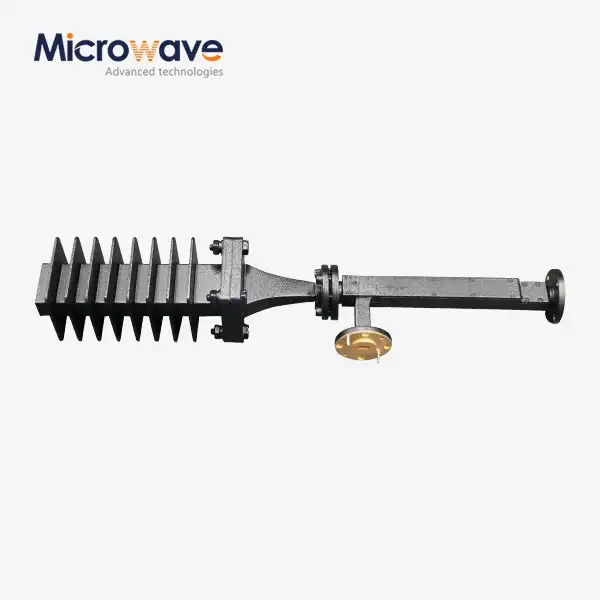 VIEW MOREWaveguide Fixed Attenuator
VIEW MOREWaveguide Fixed Attenuator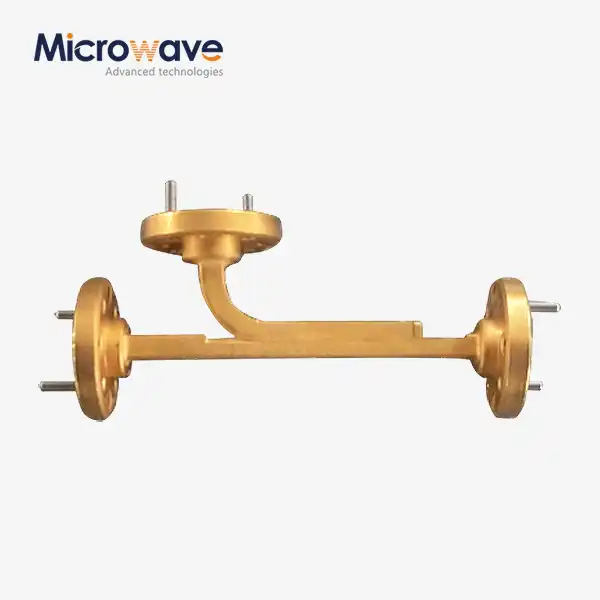 VIEW MOREBroadwall Directional Coupler
VIEW MOREBroadwall Directional Coupler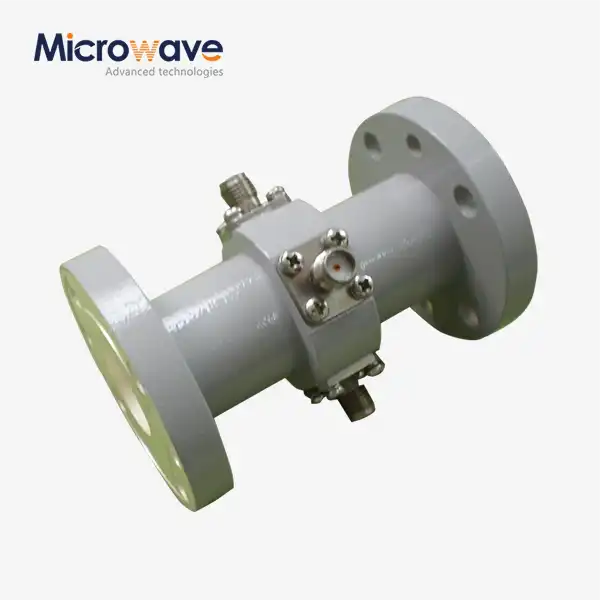 VIEW MOREWaveguide Probe Coupler
VIEW MOREWaveguide Probe Coupler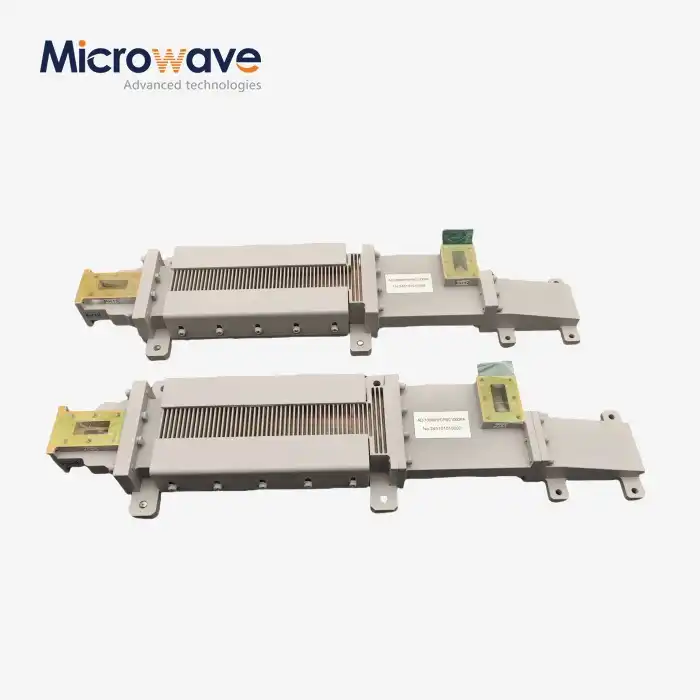 VIEW MOREWG Circulator
VIEW MOREWG Circulator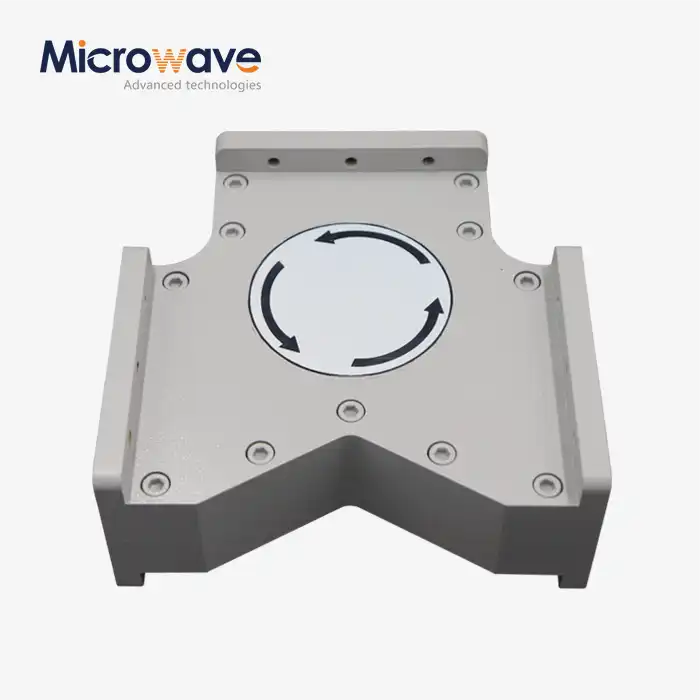 VIEW MOREHigh Power Waveguide Circulator
VIEW MOREHigh Power Waveguide Circulator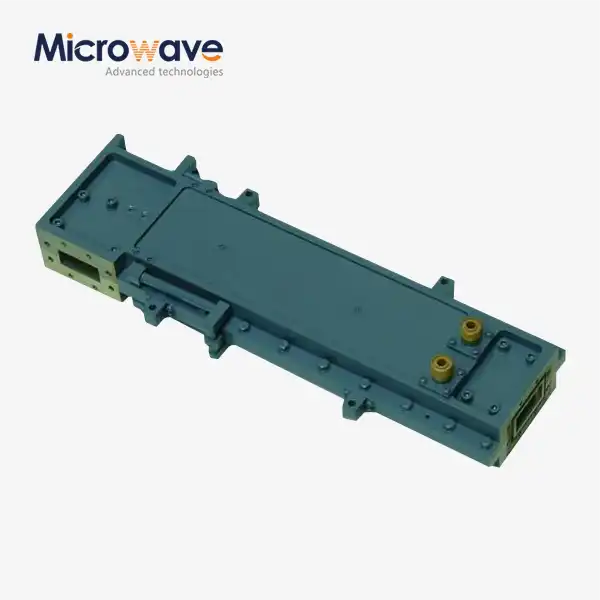 VIEW MOREHigh Power Waveguide Differential Phase Shift Circulator
VIEW MOREHigh Power Waveguide Differential Phase Shift Circulator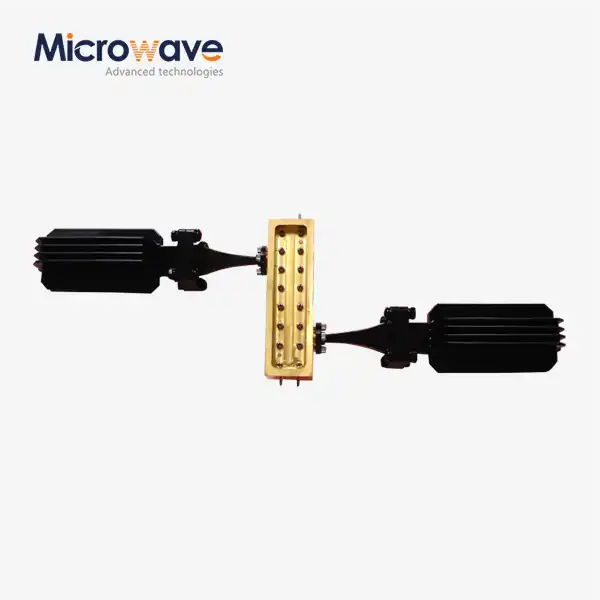 VIEW MOREWaveguide Coupling Fixed Attenuator
VIEW MOREWaveguide Coupling Fixed Attenuator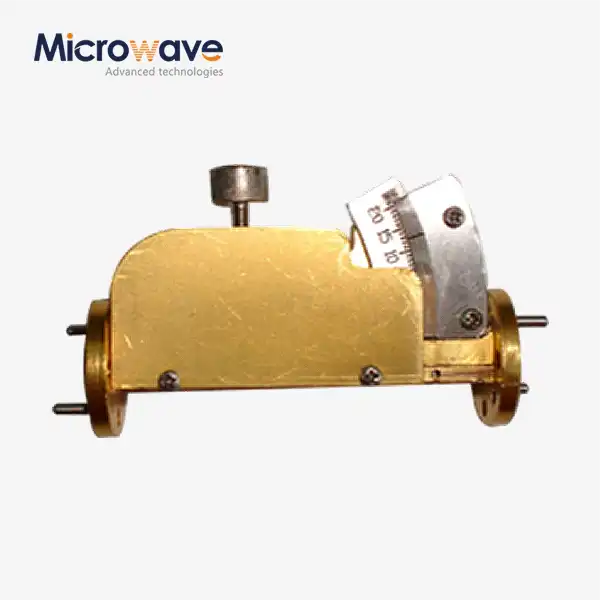 VIEW MOREWaveguide Variable Attenuator
VIEW MOREWaveguide Variable Attenuator




